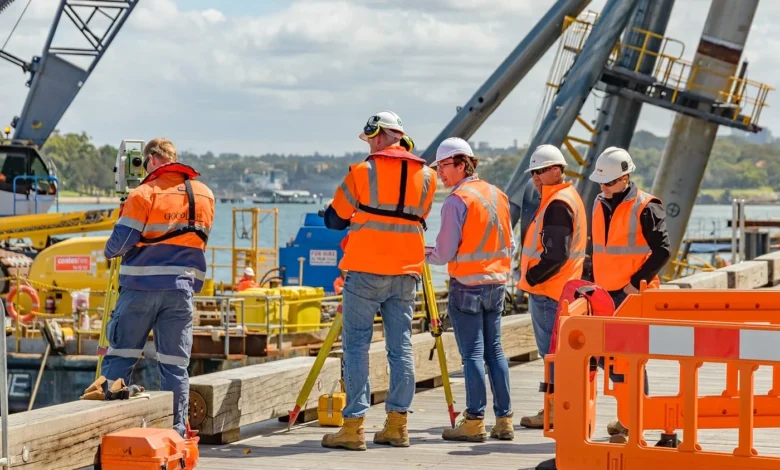WHS Consultants and Dust Monitoring: Elevating Workplace Safety Standards in Australia

Workplace safety in Australia has developed as a multi-faceted discipline, from physical to environmental health issues. Of many, the issue of dust in the air has cropped up as a big problem for most industries, whether it be mining, construction, or manufacturing. The proficiency of a WHS consultant together with effective dust monitoring practices proves indispensable for any organization that would wish to comprehensively address the issue.
This blog looks at how WHS consultants are changing the way Australian workplaces approach dust monitoring in their spaces to make them safer while aligning with regulatory and sustainability objectives.
Dust in the Australian Workplace: A Growing Concern
Airborne dust in the workplace is not just a nuisance—it’s a silent health hazard with far-reaching implications. Silica dust, for instance, has been linked to diseases such as silicosis and lung cancer, posing severe risks to workers in industries such as construction and quarrying. Additionally, combustible dust can create fire and explosion risks, especially in manufacturing and processing facilities.
This is critical in WHS strategies as this is a prevalent issue that often faces industries operating within the Australian industrial landscape, as many industries work under arduous conditions with dusty areas.
It is at this juncture where the involvement of WHS consultants and dust monitoring plays an integral role.
A WHS consultant brings strategic thinking into dust risk management within the workplace. Far from just giving generic safety advice, these professionals develop solutions that address the specific operational and regulatory demands unique to Australian industries.
1. Risk Assessment and Identification
WHS consultants conduct thorough risk assessments to identify sources of dust generation. This includes analyzing processes, materials, and work environments to pinpoint high-risk areas. For example, they might evaluate grinding operations in a manufacturing plant or assess excavation activities in a mining site.
2. Regulatory Compliance
Australia has stringent workplace safety laws, including exposure limits for dust particles set by Safe Work Australia. A WHS consultant ensures businesses not only comply with these regulations but also stay ahead of changes by adopting proactive measures.
3. Designing Control Measures
WHS consultants design and implement effective control measures to mitigate dust exposure. This can include:
Engineering controls, such as improved ventilation systems or dust extraction units.
Administrative controls, like modifying work schedules to minimize exposure times.
Personal protective equipment (PPE), including respiratory protection tailored to specific dust types.
4. Employee Training and Engagement
Training employees to recognize dust hazards and follow safe practices is a key responsibility of WHS consultants. This ensures that dust management strategies are not just implemented but actively upheld by the workforce.
The Role of Dust Monitoring in WHS Strategies
Dust monitoring is a critical component of any comprehensive WHS plan, providing the data needed to evaluate risks and the effectiveness of control measures. Advances in technology have made monitoring more precise and accessible, enabling real-time insights into workplace air quality.
Types of Dust Monitoring
Personal Monitoring: Measures the dust exposure of individual workers, offering personalized data that informs PPE requirements.
Static Monitoring: Uses fixed devices to track dust levels in specific areas, helping identify hotspots within a facility.
Real-Time Monitoring: Provides continuous data on dust levels, allowing for immediate intervention when thresholds are exceeded.
Integration with WHS Goals
WHS consultants leverage dust monitoring data to:
Identify trends and emerging risks.
Verify the effectiveness of control measures.
Ensure compliance with Australian exposure standards, such as the Workplace Exposure Standards (WES).
Benefits of a Proactive Approach
Combining WHS consulting expertise with advanced dust monitoring delivers benefits that extend beyond regulatory compliance:
Enhanced Worker Health
Reducing dust exposure minimizes the risk of respiratory illnesses, leading to a healthier and more productive workforce.
Operational Efficiency
Effective dust management reduces downtime caused by health and safety incidents, improving operational continuity.
Reputation Management
Demonstrating a commitment to workplace safety strengthens relationships with employees, regulators, and the community.
Sustainability Alignment
Dust management aligns with broader environmental goals, reducing emissions and contributing to Australia’s sustainability commitments.
Addressing Australian-Specific Challenges
Australia’s unique geography and industrial profile present specific challenges in dust management:
Remote Operations: Many industries operate in remote areas, making on-site monitoring and control implementation more complex.
Harsh Environments: High temperatures and arid conditions exacerbate dust generation and dispersion.
Regulatory Scrutiny: Australian authorities are increasingly focused on enforcing silica dust standards, pushing businesses to adopt robust WHS strategies.
WHS consultants are adept at navigating these challenges, ensuring that businesses achieve compliance while maintaining operational efficiency.
The Future of Dust Management in Australia
Emerging trends in dust management are reshaping the landscape of workplace safety:
IoT-Enabled Monitoring
Smart sensors provide real-time dust data, enabling predictive analytics and automated responses.
Sustainable Solutions
Innovative materials and technologies are being developed to reduce dust generation at the source.
Integrated WHS Platforms
Digital platforms now integrate dust monitoring data with broader WHS metrics, providing a unified view of workplace safety.
Conclusion
In Australia’s high-risk industries, managing dust exposure is not just a compliance requirement—it’s a strategic imperative for protecting workers and ensuring sustainable operations. By combining the expertise of WHS consultants with advanced dust monitoring technologies, businesses can create safer, more efficient, and more resilient workplaces.
As the regulatory environment tightens and stakeholder expectations grow, now is the time to invest in proactive dust management. This is an opportunity for Australian organizations to take the lead in occupational safety and environmental stewardship: to demonstrate and then drive practice.




